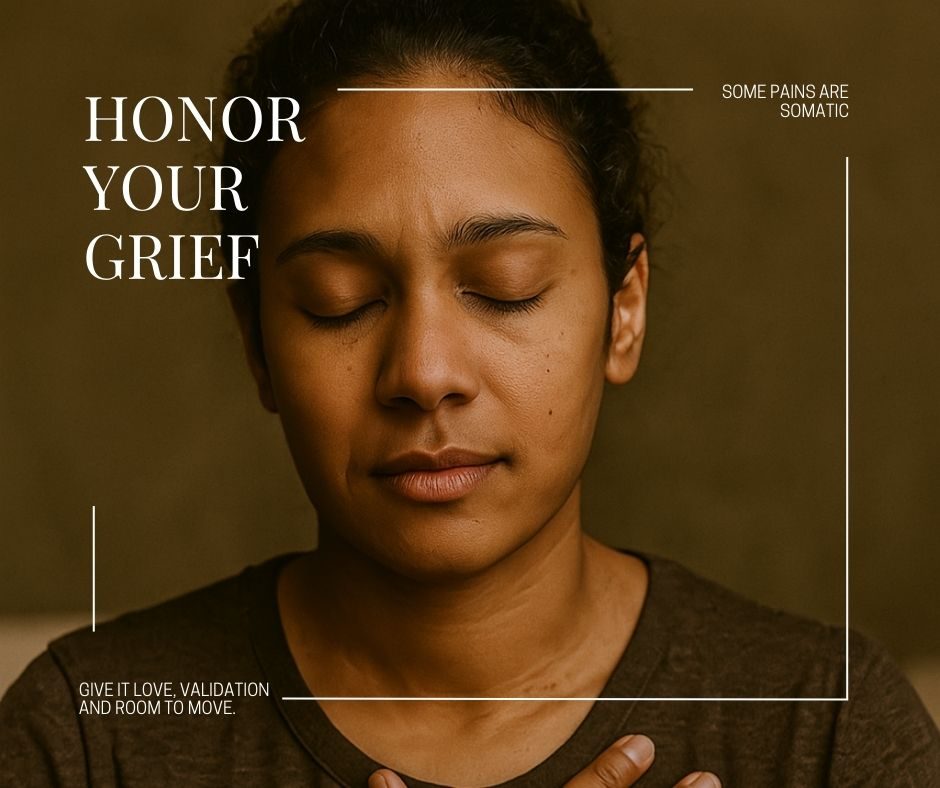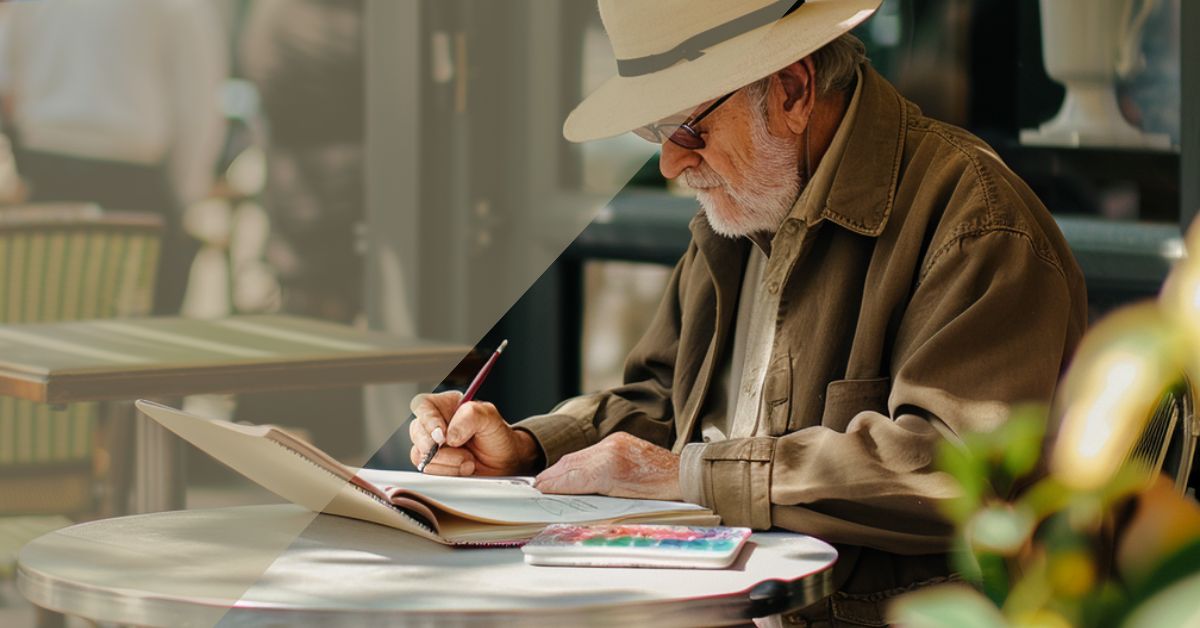Your cart is currently empty!
Physical symptoms of grief: mapping where grief lives in your body

Grief doesn’t just live in your emotions. It doesn’t stay tucked away in the heart. It shows up in the body in quiet, persistent ways that are easy to overlook until they become impossible to ignore.
In our first post in this series, How Fatigue Carries Grief in the Body, we explored how exhaustion can be more than physical and how it often expresses itself through deep, emotional fatigue that no amount of rest can touch. This piece continues that conversation.
Here, we go deeper into where grief lands.
What your body may be telling you, Somatic map of grief
Grief is not only emotional, it’s physical. While it’s commonly associated with sadness, crying, or mental distress, grief can take shape in the body in very real and measurable ways. Research, clinical practice, and firsthand accounts all point to the same conclusion: the body holds onto emotional pain, especially when it goes unprocessed.
Understanding grief in the body can help you recognize the ways loss and emotional burden might still be affecting your physical health, long after the initial event.
Below is a look at where grief often settles in the body. Common landing places for unprocessed pain and emotional weight.
Common physical places grief Manifests
- Jaw and Neck: When grief goes unspoken, it often climbs into the jaw. Clenching, grinding, tension that lingers even in sleep. The neck tightens too. This is where words get swallowed, tears get held back, and silent grief takes up residence.
- Throat: Many people feel a lump in their throat when trying not to cry or when struggling to talk about their loss. This sensation often corresponds to withheld emotion or the inability to express what they’re feeling.
- Shoulders: The phrase “carrying the weight of the world” exists for a reason. Grievers, especially caregivers or those who had to stay strong for others, often carry that weight in their shoulders. It’s where responsibility sits. It’s where we brace ourselves.
- Chest: Tightness in the chest, shallow breathing, or a feeling of heaviness is frequently reported. Grief in this area is described as a “weight on the chest” and can reflect the emotional burden of loss or sadness that hasn’t been fully processed.
- Stomach and Solar Plexus: Grief often surfaces here as nausea, cramping, loss of appetite, or a sense of dread (disrupted digestion). This area is tied to control, self-worth, and personal power. When life feels shattered by loss, this part of the body feels it deeply.
- Hips: The hips are a less obvious but significant area. Emotional trauma, especially long-term, generational, or identity-related grief can display as tightness or tension in the hips. Grief related to safety, place, identity, and ancestry can live her quietly for years.
Why the body holds grief
When the mind is overwhelmed or cannot sufficiently express what it’s feeling, the body compensates. This isn’t a failure, it’s a built-in form of protection. The nervous system responds to grief much like it does to trauma; some people freeze, others become hyper-alert, and some shut down entirely.
Grief also triggers a physiological stress response:
- cortisol and adrenaline rise
- muscles tense
- breathing becomes shallow
- digestion slows
Over time though, that protection can start to feel like restriction. The tension lingers. The fatigue deepens. And you start to wonder why you’re still so tired, so tight, so checked out. Often, it’s because the grief hasn’t left. It’s just moved inward.

This is where somatic awareness becomes useful, not as a quick fix but as a way to understand what your body has been trying to tell you. You don’t need to force anything. You just need to listen.
Recognizing somatic grief as a step toward healing
Many seek help for physical symptoms without realizing they may be grief related. Recognizing this connection may lead to a more compassionate and holistic approach to healing.
You don’t need to do anything dramatic. Somatic awareness starts with noticing. That’s it.
Noticing where it hurts. Where you’re bracing. Where you’ve gone numb.
Start by asking yourself:
- Where do I feel tense, even when nothing is happening?
- What part of my body feels like it’s carrying too much?
- If my body could speak, what would it be trying to say?
You’re not diagnosing yourself. You’re witnessing. The goal is not to release or resolve, but to reconnect. Sometimes, just naming what’s there brings a shift.
And when it doesn’t? That’s okay. You’re still showing up. You’re still choosing to see yourself clearly and that matters more than most people realize.
Ways to begin addressing somatic grief
- Body scanning practices
- Gentle breathwork
- Trauma-informed movement, like yoga, stretching)
- Naming the emotion and where it’s located
- Energy work or therapeutic touch with a trusted practitioner
The goal is not to release grief on command but to increase awareness and reduce the physical burden it creates.
A Gentle Practice: Mapping Your Grief
This practice is meant to be simple and personal. No pressure. No outcome required.
| Find a quiet space | Sit or lie down. Get comfortable. Be somewhere you feel safe enough to let be. |
| Close your eyes and breathe | Not deep breaths, allow your body to find its own rhythm |
| Scan slowly from head to toe | Notice what you feel, suspend your thoughts and “critic” – seek the physical sensations, such as tigtness, numbness, heaviness, etc. |
| Ask yourself | Where is the tension? What part of me is holding something not named, not honored? Where is the sadness? |
| Place your hand on that area | No need to fix. Just acknowledge it. You can even say, “I see you. I’m with you. You don’t have to hold this alone.” |
Come back to this as needed. The body keeps track of things you’ve long forgotten. Sometimes all it wants is to be noticed again.
Listening to the body is part of grief work
Grief doesn’t always speak through words or tears. Sometimes it speaks through muscle tightness, chronic exhaustion, or persistent discomfort. These physical signals aren’t imagined; they are real and a part of the grieving process.
By understanding how grief lives in the body, we can begin to meet ourselves and tend to ourselves with more compassion and patience. It starts with paying attention and stopping the habit of rushing the process of getting over something.
Healing starts not only with emotional acknowledgment but with physical awareness.
That’s the work. Not to escape grief, but to meet it where it lives.




